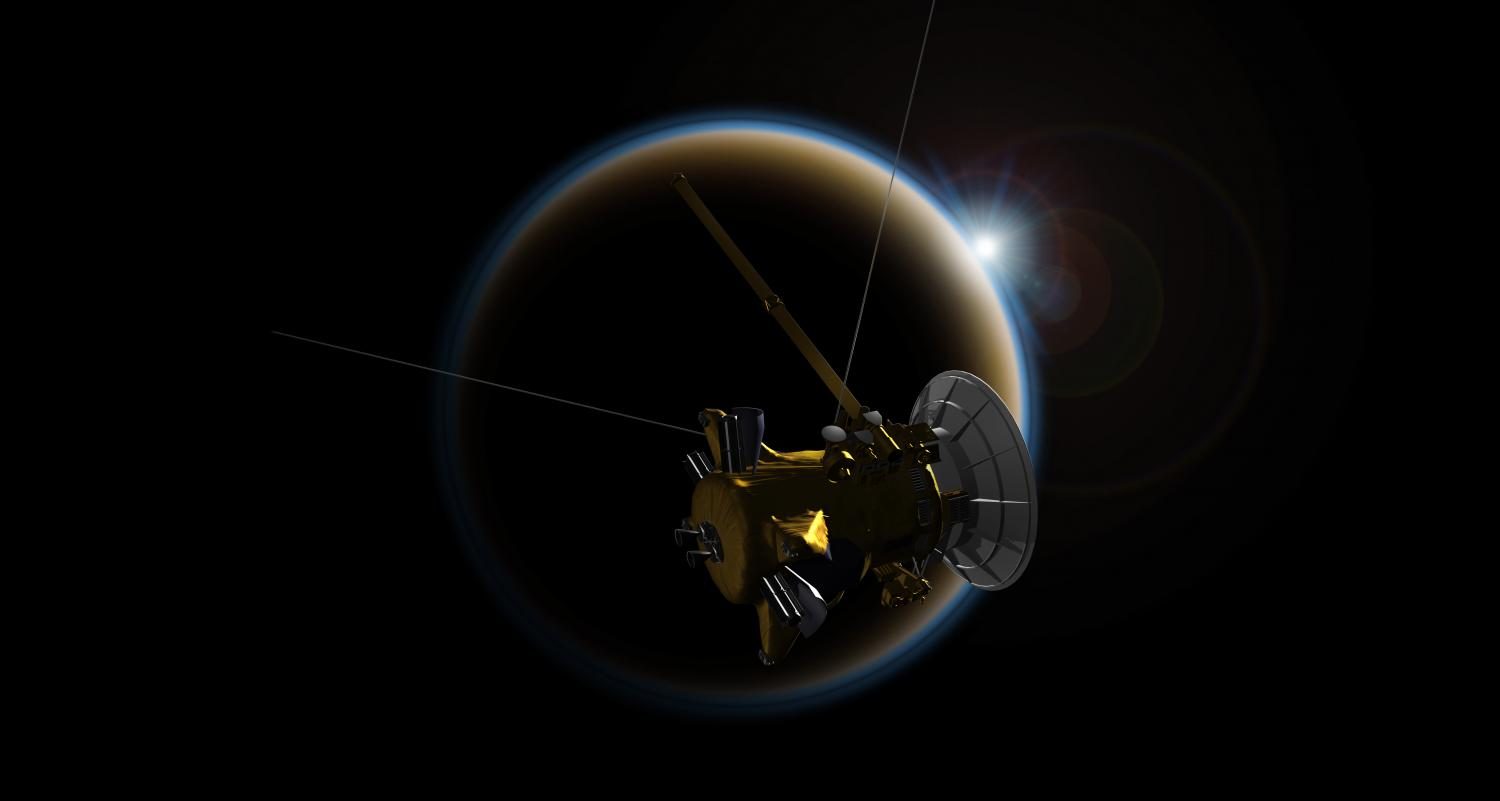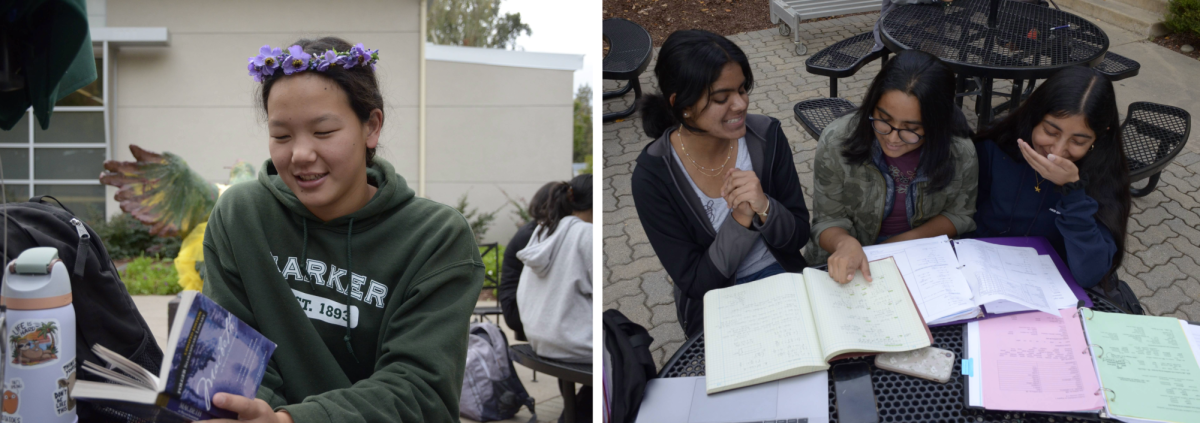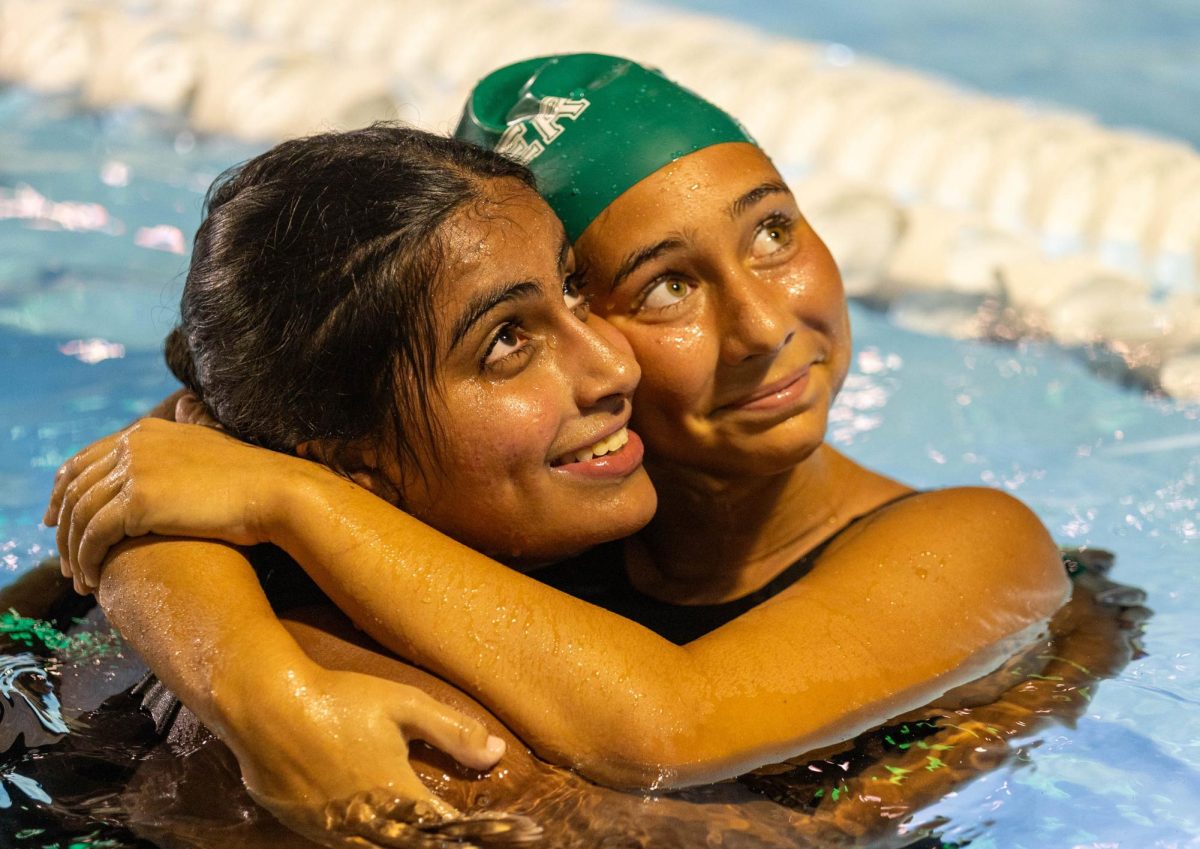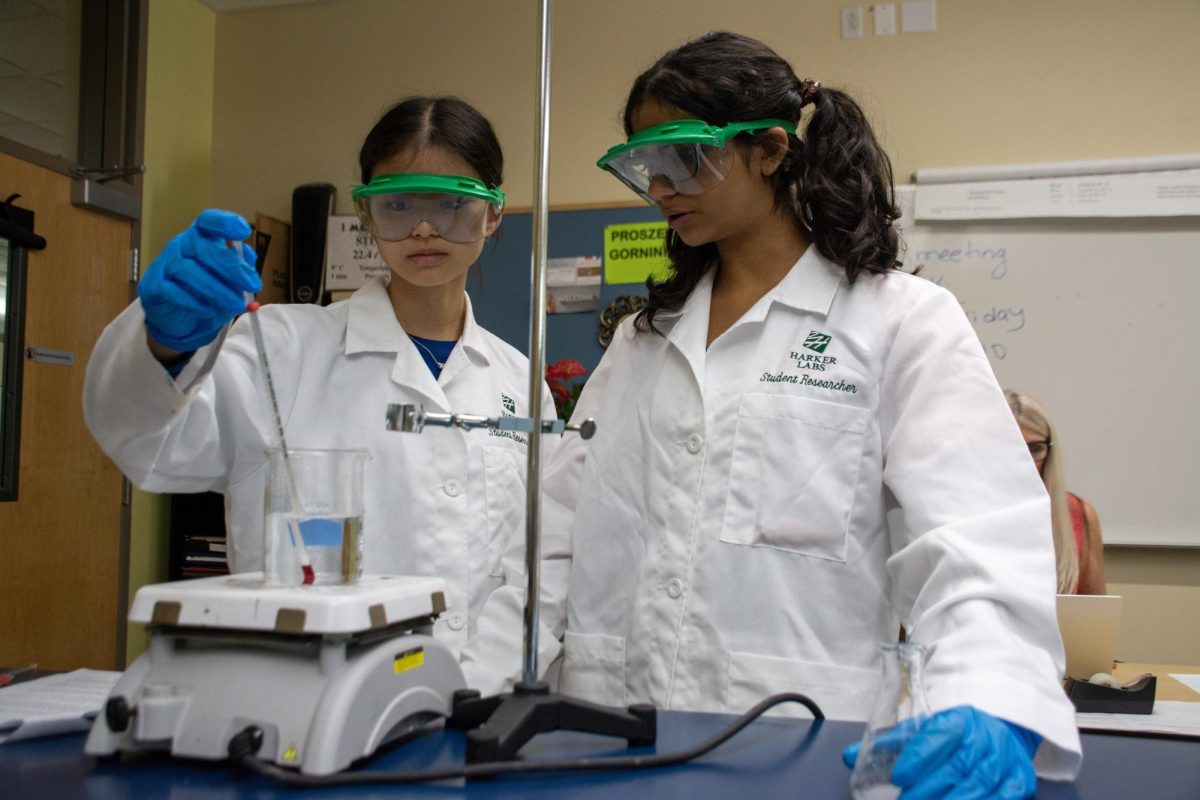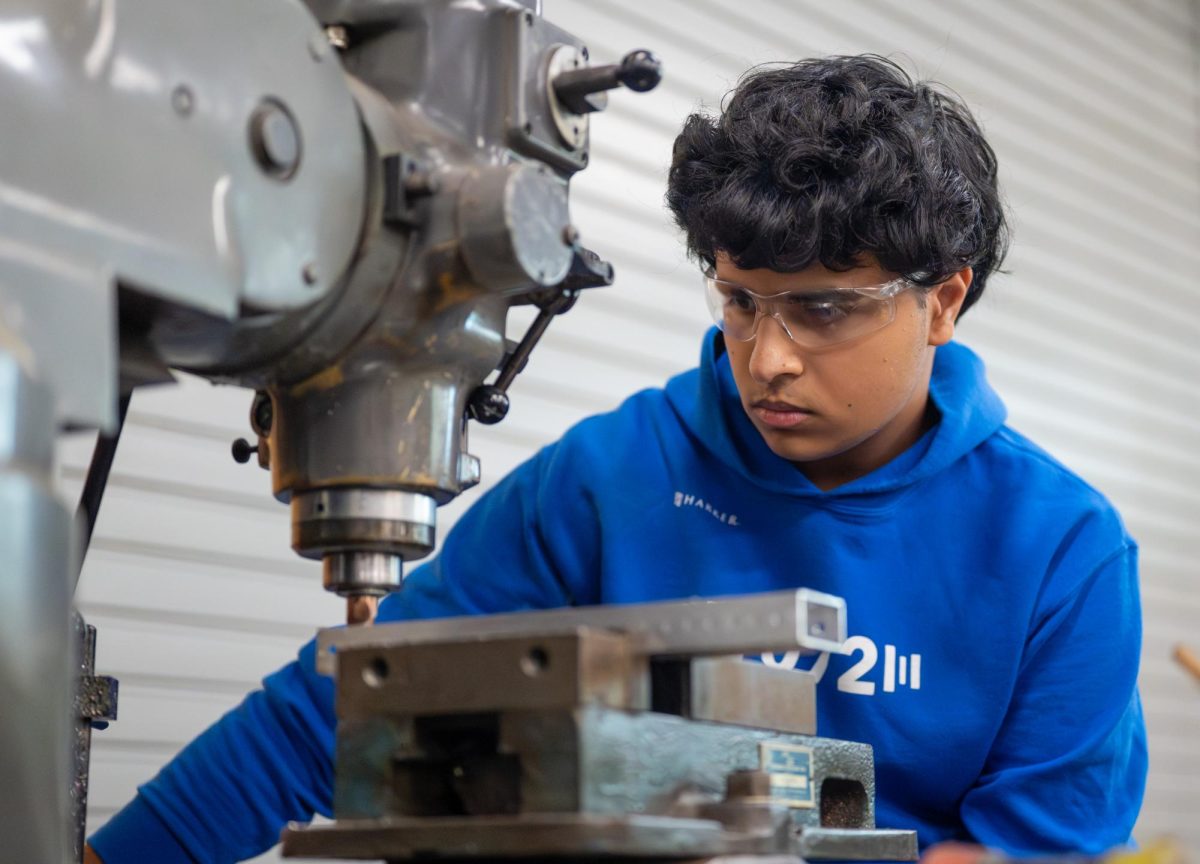NASA’s Cassini spacecraft to descend into Saturn’s atmosphere
NASA/JPL-Caltech
The Cassini spacecraft makes a flyby around Titan, one of Saturn’s moons. The spacecraft is set to plunge into Saturn’s atmosphere early tomorrow morning.
September 14, 2017
NASA’s Cassini spacecraft, currently traveling on course to Saturn, will end its 13-year trip around the planet and its moons by descending into the Saturn’s atmosphere early Friday morning.
Researchers at NASA hope to determine whether or not the Saturn’s moons—specifically Enceladus with its subsurface ocean and Titan with its lakes of methane—are habitable. NASA predicts their observation centers will lose contact with the Cassini probe around one minute after its entrance into Saturn’s atmosphere, where the spacecraft will begin to crumble and burn up under the heat of Saturn’s cloud tops.
“When a solid object enters the outer atmosphere of a planet, the outer atmosphere is extremely rarefied. The object is actually moving faster than the average speed of the particles up in the atmosphere, which means the particles can’t get out of the way,” physics and astronomy teacher Dr. Eric Nelson said. “They start building up a pressure wave on the front of the spacecraft. Anybody that’s taken chemistry remembers Boyle’s law, and as the pressure goes up, the temperatures goes up—to the point where you end up with a superheated plasma shockwave in front of the spacecraft.”
Radio signals from the Cassini probe take around 83 minutes to reach Earth, and the spacecraft is predicted to stop transmitting signals at around 3:31 a.m. PST. NASA’s Deep Space Network observatory in Canberra, Australia will receive the Cassini probe’s last messages until the spacecraft’s disintegration, which researchers predict will take around five to six minutes in Saturn’s high atmospheric heat.
NASA first launched the probe in 1997 from Cape Canaveral Air Force Station Space Launch Complex 40 in Cape Canaveral, Florida. The Cassini spacecraft discovered two new moons in Saturn’s system around one month before it entered Saturn’s orbit in July 2004. After mapping and taking pictures of the planet’s moons and rings for four years, researchers decided to bring the Cassini spacecraft closer to Saturn with trips in and out of the gap between the planet and its rings. Its last of 22 such dives, dubbed the “Grand Finale,” would take the probe into the Saturn itself.

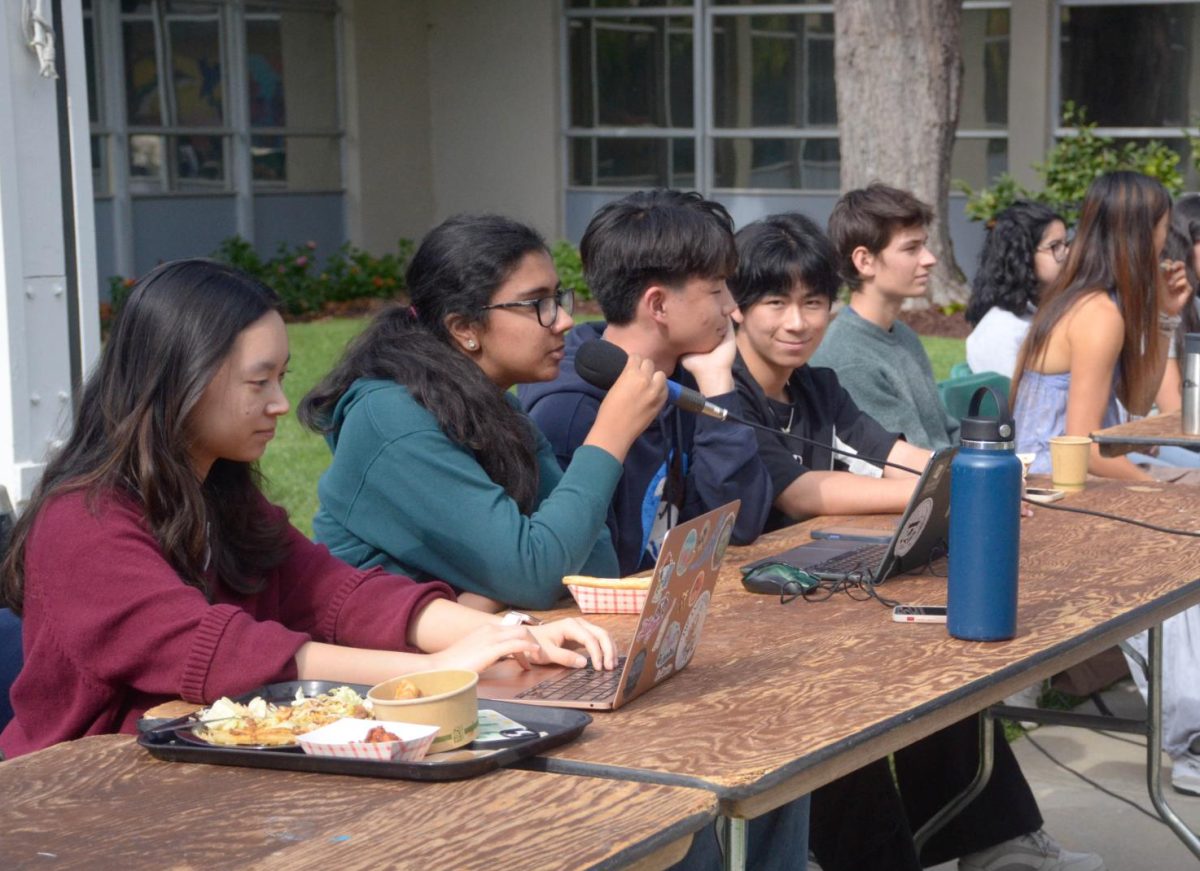

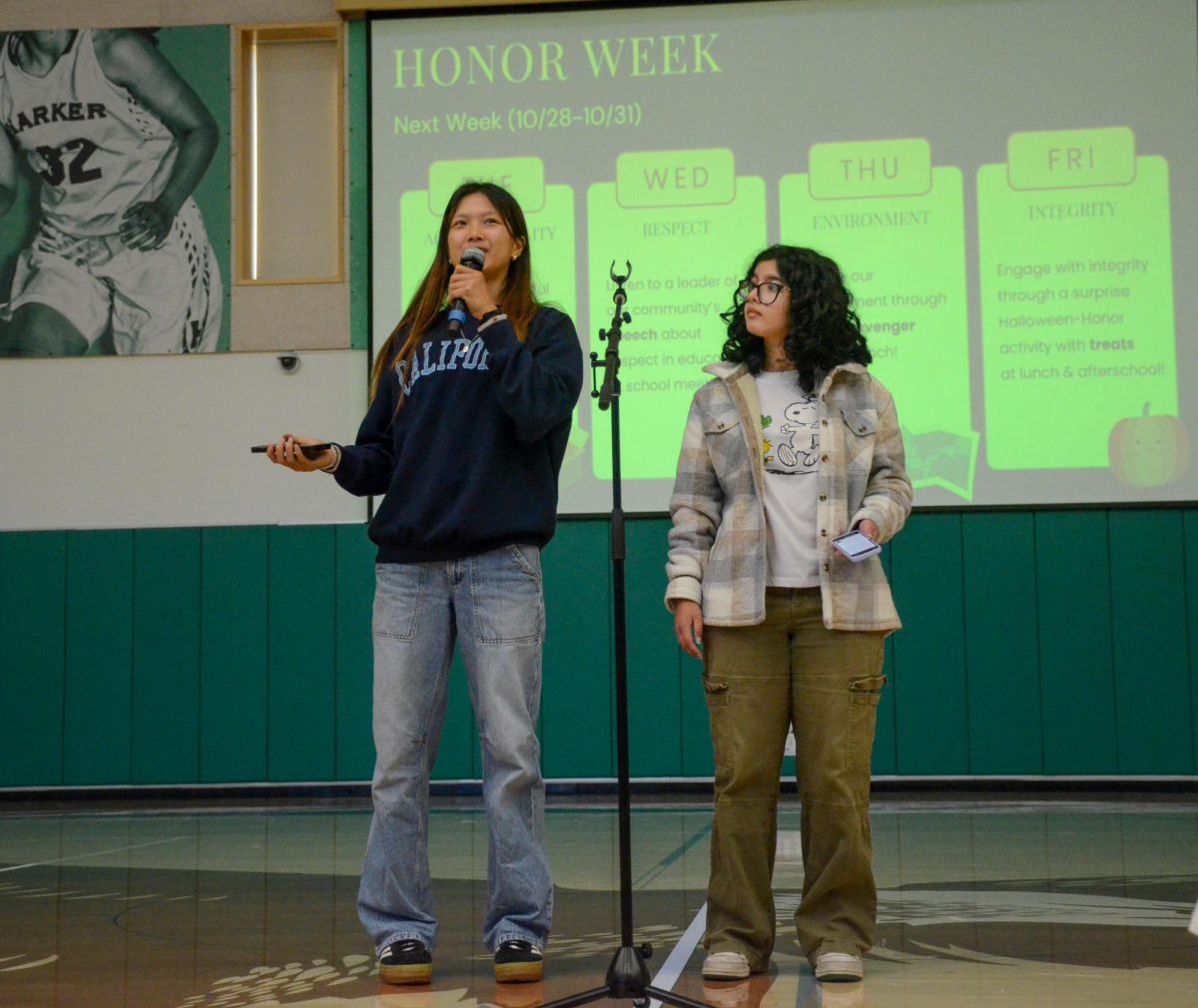
![LALC Vice President of External Affairs Raeanne Li (11) explains the International Phonetic Alphabet to attendees. "We decided to have more fun topics this year instead of just talking about the same things every year so our older members can also [enjoy],” Raeanne said.](https://harkeraquila.com/wp-content/uploads/2025/10/DSC_4627-1200x795.jpg)
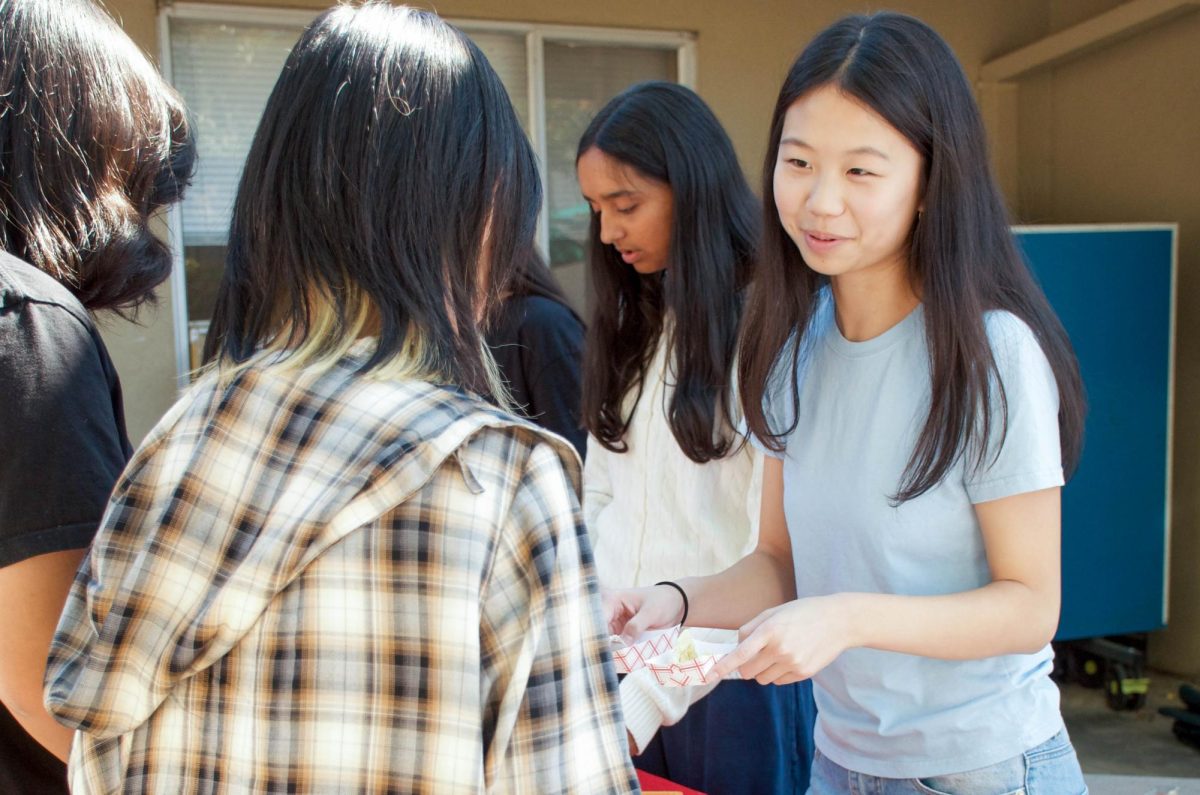

















![“[Building nerf blasters] became this outlet of creativity for me that hasn't been matched by anything else. The process [of] making a build complete to your desire is such a painstakingly difficult process, but I've had to learn from [the skills needed from] soldering to proper painting. There's so many different options for everything, if you think about it, it exists. The best part is [that] if it doesn't exist, you can build it yourself," Ishaan Parate said.](https://harkeraquila.com/wp-content/uploads/2022/08/DSC_8149-900x604.jpg)




![“When I came into high school, I was ready to be a follower. But DECA was a game changer for me. It helped me overcome my fear of public speaking, and it's played such a major role in who I've become today. To be able to successfully lead a chapter of 150 students, an officer team and be one of the upperclassmen I once really admired is something I'm [really] proud of,” Anvitha Tummala ('21) said.](https://harkeraquila.com/wp-content/uploads/2021/07/Screen-Shot-2021-07-25-at-9.50.05-AM-900x594.png)







![“I think getting up in the morning and having a sense of purpose [is exciting]. I think without a certain amount of drive, life is kind of obsolete and mundane, and I think having that every single day is what makes each day unique and kind of makes life exciting,” Neymika Jain (12) said.](https://harkeraquila.com/wp-content/uploads/2017/06/Screen-Shot-2017-06-03-at-4.54.16-PM.png)








![“My slogan is ‘slow feet, don’t eat, and I’m hungry.’ You need to run fast to get where you are–you aren't going to get those championships if you aren't fast,” Angel Cervantes (12) said. “I want to do well in school on my tests and in track and win championships for my team. I live by that, [and] I can do that anywhere: in the classroom or on the field.”](https://harkeraquila.com/wp-content/uploads/2018/06/DSC5146-900x601.jpg)
![“[Volleyball has] taught me how to fall correctly, and another thing it taught is that you don’t have to be the best at something to be good at it. If you just hit the ball in a smart way, then it still scores points and you’re good at it. You could be a background player and still make a much bigger impact on the team than you would think,” Anya Gert (’20) said.](https://harkeraquila.com/wp-content/uploads/2020/06/AnnaGert_JinTuan_HoHPhotoEdited-600x900.jpeg)

![“I'm not nearly there yet, but [my confidence has] definitely been getting better since I was pretty shy and timid coming into Harker my freshman year. I know that there's a lot of people that are really confident in what they do, and I really admire them. Everyone's so driven and that has really pushed me to kind of try to find my own place in high school and be more confident,” Alyssa Huang (’20) said.](https://harkeraquila.com/wp-content/uploads/2020/06/AlyssaHuang_EmilyChen_HoHPhoto-900x749.jpeg)



